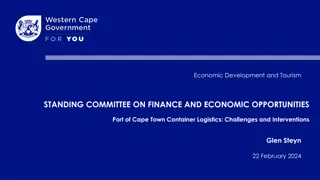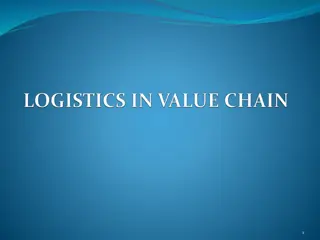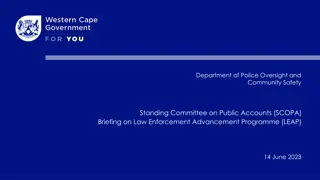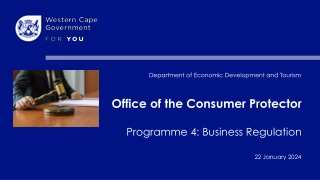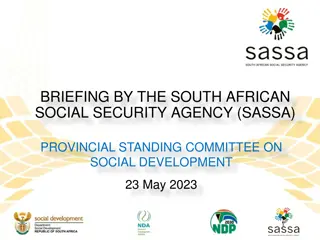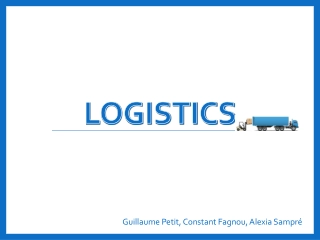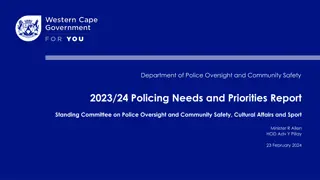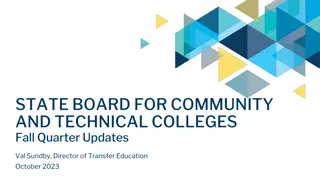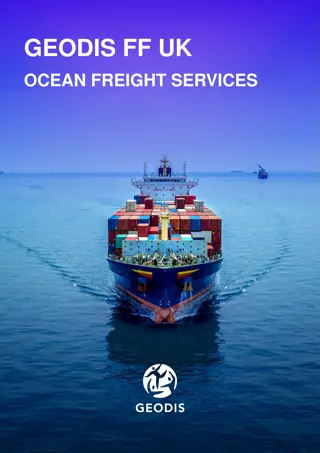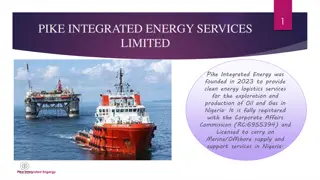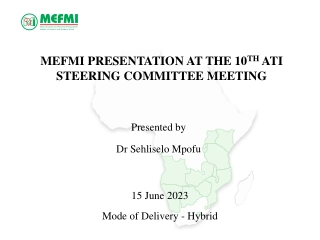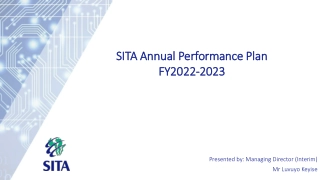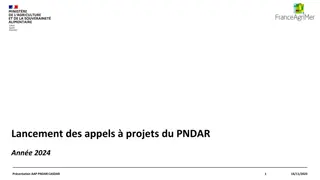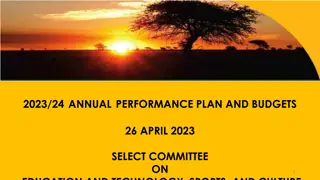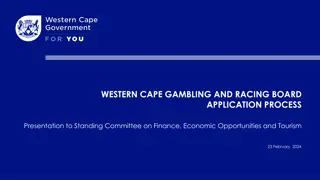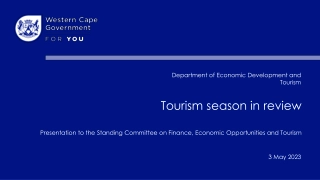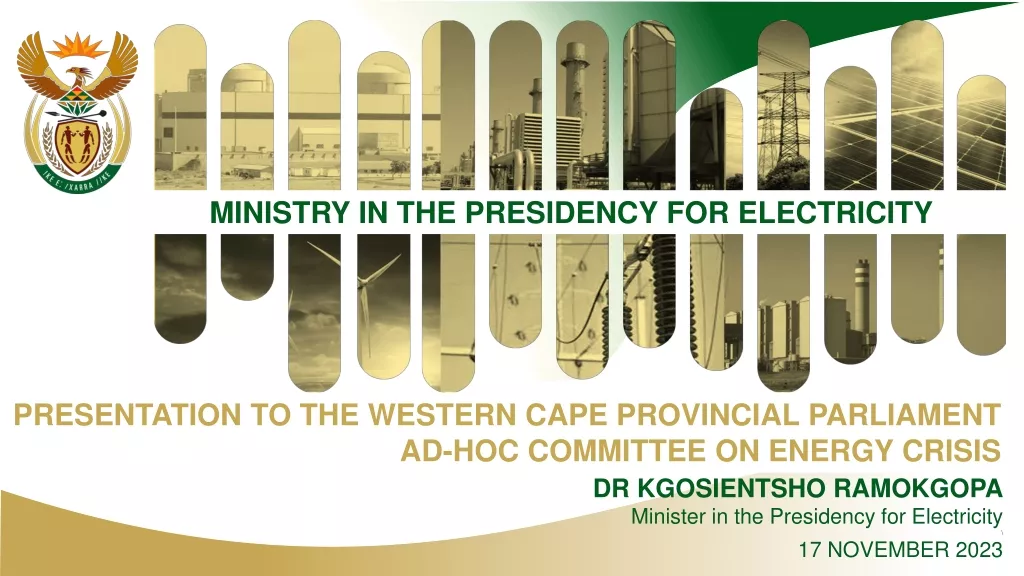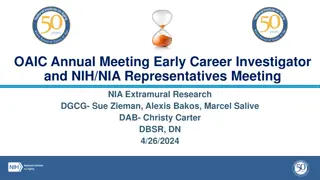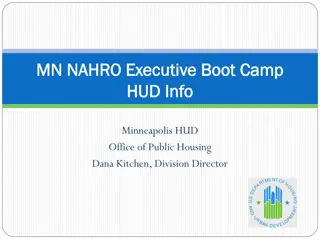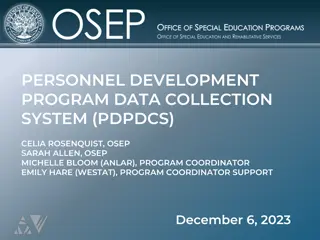Enhancing Container Logistics at Port of Cape Town: Collaboration and Priorities
The presentation discusses the collaborative efforts and key priorities identified since December 2019 to improve container logistics at the Port of Cape Town. It highlights challenges faced, including congestion and communication issues, and proposes solutions such as upgrading equipment, enhancing communication, and addressing transporter congestion. The focus is on improving operational efficiency and integration within the logistics chain to drive economic development and tourism in the region.
Download Presentation
Please find below an Image/Link to download the presentation.
The content on the website is provided AS IS for your information and personal use only. It may not be sold, licensed, or shared on other websites without obtaining consent from the author. Download presentation by click this link. If you encounter any issues during the download, it is possible that the publisher has removed the file from their server.
Presentation Transcript
Economic Development and Tourism STANDING COMMITTEE ON FINANCE AND ECONOMIC OPPORTUNITIES Port of Cape Town Container Logistics Glen Steyn 6 June 2023
Content of Presentation The Journey of Collaboration since Dec 2019 Applied Research Results Logistics Chain Logistics Dashboard Current Situation Summary Proposed Way Forward
1. The Journey of Collaboration since December 2019 Context in 2019 was good rain after devasting drought Fruit and wine represent almost 50% of WC exports Yields also increased from improved rootstock Port congestion drove stakeholders together Root causes of congestion were identified as: a) Institutional, including poor logistics integration, communications, industrial relations, data and weak voice of cargo owners, b) No strategy for cargo growth, seasonal peaks, high wind speeds and ranging, c) Bunching of truck arrivals in the morning, with queuing on Marine Drive and Duncan Road PoCT Stakeholder Workshop: Dec 2019 Consensus was reached on need for collaboration and collective focus on top priorities
1.1 The Journey Continued: Top 3 Priorities 1. Inadequate operational port and terminal equipment for growing cargo volumes TNPA improved the marine fleet and are approaching zero marine delays Hydraulic tensioners installed in Nov 2022 to mitigate ranging TPT improved STS fleet to 9 and RTG s to 24. Industry is appealing for more RTG s 2. Improved communication in the Port Logistics Chain WhatsApp groups and access to shift manager contact details are valuable Weekly operations co-ordination meetings with port and terminal managers promote collaboration Room to further improve real time multi-stakeholder communications. Refer to logistics dashboard 3. Transporter Congestion Remains problematic interfaces with all priorities Truck booking system is helpful, but requires fine tuning Night shift utilization improved to 17% in week of 5 Dec. Further improvement requires agency co-ordination
1.2 The Journey Continued: Priorities 4-6 4. Data and Logistics Chain Integration Excellent data parcels exist, but isolated at points of collection Data integration has started to improve management of seasonal cargo flow refer to applied research Next step is improved interface between container terminal, cold stores, shipping lines and transporters 5. Comparative Best Practice Performance Indicators Logistics Dashboard Consensus is emerging on marine and terminal performance indicators (WTTB, VTAT, TEU s moved, SWH) Information is increasingly being provided, processed and discussed to improve performance/reduce delays Focus needs to expand to nodes in logistic chain beyond the container terminals 6. Inland Terminal Development Belcon is an exciting psp opportunity. Ready for 2023 deciduous exports Kraaifontein provides an additional option for the longer term Both options could trigger valuable shifts from road to rail
2. Action Research Completed Root cause analysis on transporter congestion Enhanced the Western Cape FDM to understand growth in containerized cargo volumes per commodity until 2026 Deep dive to understand wine export trends and dynamics Estimated the economic contribution of container terminals
2.1 Action Research Completed Root Causes of Transporter Congestion Wind/weather: 30% Gate closure, including shift change: 9% Stack congestion and IT system failure: 4% Unspecified, including terminal capacity limitations/operational availability of equipment 57% Recommendations: Truck booking system Done Oct 21- consider optimization Improve traffic control and driver behaviour Improve terminal capacity/performance (time lost on shift change) Improve planning & communication among different members in log chain
2.2 Projected containerized cargo 2026 Anticipated Growth is 26% 70,000 200 180 60,000 160 Average hours of operating time lost 50,000 140 120 40,000 TEUs 100 30,000 80 60 20,000 40 10,000 20 - - Jan Feb Mar Apr May Jun Jul Aug Sep Oct Nov Dec Fruit-Very High: < 2wks Fruit-High: 2-4 wks Fruit-Moderate: 4-8 wks Fruit-Low: 8-16 wks Other Agriculture Mining Manufacturing Average lost hours
2.3. Current and Expected Growth in Wine Exports Wine exports are expected to grow until 2026, after the slump from 2019 to 2020. Volume growth in 2023 is expected to be 12% 1000 Million Litres 900 38% 800 39% 40% Exporters are concerned about terminal efficiency and vessels bypassing Cape Town 700 35% 45% 600 62% 43% 61% 60% Wine is less perishable than fruit and provides some opportunity for logistics management during off-peak periods for Port of Cape Town 65% 500 55% 57% 400 300 Wine export industry is well organized and should be engaged to develop win-win export solutions. Data intelligence can be improved via DALLRD WoL 200 100 Stakeholders could collaborate to promote wine exports 0 2016 2017 2018 2019 2020 2021 2022 2023 2024 2025 2026 2027 Domestic Wine Consumption Wine Exports Wine Bulk Exports Wine Packaged Exports Drinking Wine production Ending Stock
2.4. Contribution of CT Container Terminals to Western Cape Economy It is estimated that container terminals contributed towards R72.5 bn of the GVA in Western Cape in 2021 (8.6%) and to the creation/sustaining of 225,000 jobs. Taxes paid from these activities was almost R20 billion. Difference between high and low growth scenarios for 2026 (at current prices) is as follows: Indicator GVA R bn Jobs Remuneration R bn Taxes Paid R bn High Growth 74.7 240,000 32 21.8 Low Growth 69.1 220,500 29.9 20.2 Difference 5.6 19,500 2.1 1.6 DEDAT interventions are aimed at facilitating the high-growth outcome in collaboration with all agencies in the port logistics chain.
3. Macro Logistics Chain for Port of Cape Town Containers National Government Provincial Government Industry Associations Packhouses Cold Stores DC s Container Depots Transnet OD s Shipping Lines Exporters Importers Transporters Metro, District & Local Government
4.2. Cape Town Container Logistics Dashboard: Why a dashboard? Port container logistics dashboard provides transparent view to facilitate integrated cargo planning and identify bottlenecks. Real time view using multiple data sources, providing an end-to-end view of the port logistics value chain. One of 12 joint priorities from annual port stakeholder dialogue. Port of Cape Town prototype customized and enhanced from Durban test case Free subscription to primary user agencies for 2023 to extend logistics focus and refine indicators. Objective is line of sight on cargo from origin to destination
5. Current Situation Summary Citrus export season started on 15 May. WTTB improved from >6 days March - 2 days May VTAT improved from >15 days March - 4 days May Big improvement on Linerlytica global port congestion watch: Position 7 on 28 March to position 61 on 2 May (position 1 is most congested, with 143 ports on the list) Operational availability of rubber tyred gantries remains a critical constraint. Shore tensioners on 2 berths brought relief 1 berth remains vulnerable to ranging Belcon will provide additional plug points Loadshedding is a significant constraint
5.2 Synopsis of Successes to Date Effective platform for collaboration established in Port of Cape Town Logistics Chain Fourth Annual Port Stakeholder engagement held on 20th January 2023 Hydraulic tensioners on 2 berths are mitigating the impact of ranging Port Manager has implemented a policy of zero tolerance for marine delays Transnet Port Terminals deployed a 9th ship to shore crane and a 3rd mobile harbour crane Critical indicators have improved, such as WTTB from >6 days March to 2 days May; and VTAT >15 days March to 4 days May Record performance of 21,000 TEU s moved in the two TPT terminals during 1st week of April 2023 PoCT position on Linerlytica global port congestion watch improved significantly First version of Port of Cape Town Container Logistics Dashboard Released Belcon will provide additional plug points for refrigerated containers at inland terminal
6. Proposed Way Forward 2 1 Build on what has worked. Intensify collaboration with TRANSNET/other stakeholders to synchronize and extend the logistics chain as a platform for further development Improve planning co- ordination between cold stores, container terminals, shipping lines and transporters - Dashboard. Mitigate wind disruption and optimize utilization of operational time 3 Agree upon and jointly pursue appropriate performance targets, including operational availability of HLE, with the required resources 5 4 Collaboratively make the best - case scenario happen, with 26% export and cargo growth by 2026; and 20,000 new jobs Investigate suitable opportunities for private sector participation in the port logistics chain



